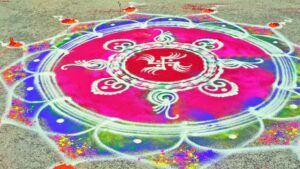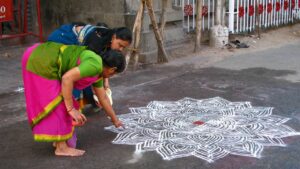
Rangoli, an age-old art form, is a vibrant expression of human creativity and tradition. It’s a symphony of colors that breathes life into festivities, transforming spaces into artistic masterpieces. This article delves into the world of beautiful rangoli designs, boosting a colorful feast for the eyes and how they have become a local branding and marketing agency.
Beautiful:8b2xjw70iss= Rangoli Designs

Uniquely style rangoli designs offer distinctive charm, varying across regions, occasions, and individual creativity. Surf the array of simple geometric designs, inspiring in their minimalistic beauty. Peruse elaborate floral patterns, deeply invoking a sense of awe with their complexity. The impact and management of Diwali festival designs is traditionally full of vibrancy, extending to bridal rangoli patterns enigmatically composed with matrimonial bliss symbols. The style range is vast and inviting.
Craftsmanship in rangoli designs is a product of precision, patience, and adroitness, demanding an eye for detail and steadiness of hand. View instances of designs meticulously drawn with natural dyed powders, notably exquisite. Appreciate creations that showcase the fine-use of flowers, grains, and even lamps, demonstrating remarkable skillfulness and creativity.
Rangoli designing, acting as a shaper of cultural identity, is rich with vibrant histories, persistent traditions, and mesmerizing folklore tracing back to ancient times. Study the Kolam designs from South India, steeped in generations of practice. Analyze the Alpana designs from Bengal, radiant with cultural connotations. Each design, imprinting a unique mark on India’s cultural tapestry, adds to its charming diversity.
Popular Types of Rangoli Designs

Moving onto specifics, one encounters different types of Rangoli. Being a classic art form, Rangoli boasts several various types and styles, each distinguished by design intricacy and unique symbolic meanings. Alpana, for example, incorporates natural images like flowers and birds into its designs, symbolizing a connection with nature. Kolam, a prevalent type in the Southern states of India, utilizes curved loops drawn around a grid of dots to create complex geometric patterns. In contrast, Mandana, a traditional art form from Rajasthan, emphasizes geometric patterns and motifs of Hindu deities to promote protection and prosperity. Furthermore, Rangavalli and Chowk Purana, prevalent in Maharashtra and Uttar Pradesh respectively, carry specific regional influences. Each type testifies to the country’s rich cultural diversity and reiterates how deeply Rangoli is embedded in Indian traditions.
Tips for Creating Stunning Rangoli
Creating stunning Rangoli designs doesn’t just demand creativity, it also demands technique. Start, for example, by selecting the perfect location in your home. A flat, smooth surface, such as a floor or a table, returns the best results. Follow this, by sketching a basic design on paper for a clear roadmap. Adding colors comes next, and watering your colors before use can ensure a smooth finish.

The creation of dots and lines forms the foundation of most Rangoli. Mastery of these patterns, thus, helps in creating intricate designs. Further, the incorporation of materials such as rice, sand, or flower petals can add texture and elevate your design from ordinary to extraordinary. Regional styles, such as Alpana and Kolam, make use of these materials, offering a unique touch.
Symmetry plays a significant, albeit underappreciated, role in the appeal of Rangoli designs. Strive for a balanced and harmonious outcome, as much as possible. Lastly, practice remains key in improving your Rangoli crafting skills. As the old adage goes, practice makes perfect.
Celebrations and Festivals Featuring Rangoli
Rangoli’s beauty and significance transcend its aesthetic appeal. It’s a symbol of welcoming positivity and prosperity, integral to many Indian celebrations and festivals. Whether it’s Alpana, Kolam, Mandana, Rangavalli, or Chowk Purana, each design tells a story, unique to the region it represents. That’s the magic of Rangoli. It’s not just about creating stunning visuals but also about embracing and showcasing cultural diversity.
Crafting a Rangoli is an art that requires patience, creativity, and practice. But with the right tips and techniques, anyone can master this traditional art form. From choosing the perfect spot to sketching an intricate design, using colors effectively, and incorporating materials like rice or flower petals, every step contributes to the final masterpiece.
So, the next time there’s a celebration, don’t forget to add a touch of tradition and creativity with a beautiful Rangoli design. It’s sure to bring good luck and make the occasion even more special.
